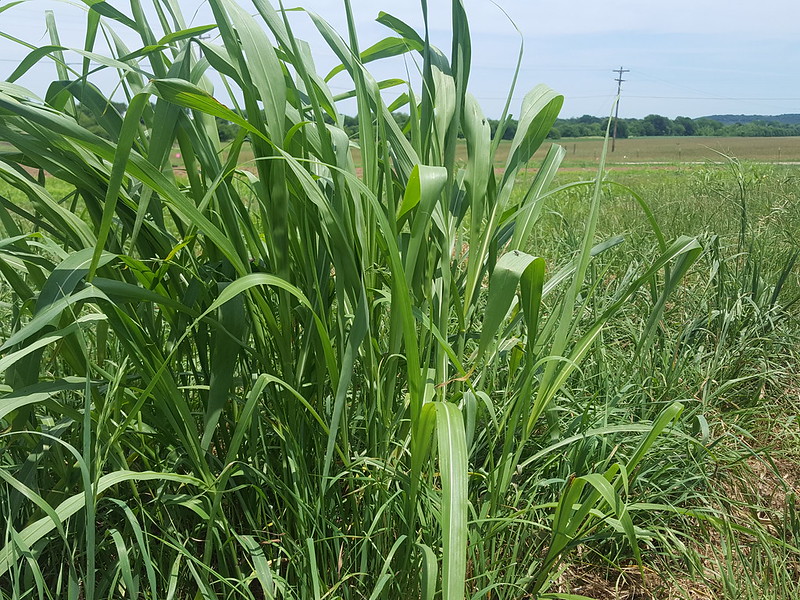Oct. 30, 2020
Use caution when grazing johnsongrass after frost
By the U of A System Division of Agriculture
Fast Facts:
- Johnsongrass and some other forages pose risks to livestock after frost
- Toxic levels of prussic acid will dissipate if forage allowed to dry
(312 words)
(Download this story in MS Word format here.)
LITTLE ROCK — With the arrival of low fall temperatures hinting at the winter surely on its way, ranchers and pasture managers should be keeping an eye on what their cattle are grazing, experts with the University of Arkansas System Division of Arkansas cautioned this week.
John Jennings, extension forage specialist for the Division of Agriculture, said that scattered frosts will likely be occurring across the state over the next few weeks and will increase toxicity risk when grazing pastures containing johnsongrass.
“When johnsongrass becomes stressed, it can produce prussic acid, also known as hydrocyanic acid, which is very toxic to livestock,” Jennings said. “Prussic acid toxicity can kill cattle quickly, often before a producer has a chance to observe that the animal is under stress.”
Forages prone to prussic acid are johnsongrass, sorghum, sudangrass, Green Graze (a family of hybrid varieties), grain sorghum and forage sorghum, Jennings said. Freeze damage from fall frosts can cause these forages to become toxic.
When frosts do occur, all is not lost, Jennings said — the forages just need time to dry out, allowing the prussic acid time to dissipate.
“These forages should not be grazed following a hard frost until the plants become completely dried out and brown paper colored,” Jennings said. “Do not graze at night when frost is likely. To reduce risk even further, don’t turn hungry cattle directly out on johnsongrass pasture. Make sure they have grazed other forages first or fill them up on hay.
“Properly dried johnsongrass hay does not contain prussic acid and is safe to feed,” he said.
While silage may contain toxic quantities of prussic acid, it usually escapes in gaseous form while being moved and fed. If frosted forage is ensiled or wrapped in plastic as baleage, Jennings said producers should allow the fermentation to take place for at least six weeks before feeding it to livestock.
To learn more about extension programs in Arkansas, contact your local Cooperative Extension Service agent or visit www.uaex.uada.edu. Follow us on Twitter at @UAEX_edu.
About the Division of Agriculture
The University of Arkansas System Division of Agriculture’s mission is to strengthen agriculture, communities, and families by connecting trusted research to the adoption of best practices. Through the Agricultural Experiment Station and the Cooperative Extension Service, the Division of Agriculture conducts research and extension work within the nation’s historic land grant education system.
The Division of Agriculture is one of 20 entities within the University of Arkansas System. It has offices in all 75 counties in Arkansas and faculty on five system campuses.
Pursuant to 7 CFR § 15.3, the University of Arkansas System Division of Agriculture offers all its Extension and Research programs and services (including employment) without regard to race, color, sex, national origin, religion, age, disability, marital or veteran status, genetic information, sexual preference, pregnancy or any other legally protected status, and is an equal opportunity institution.
# # #
Media contact:
Ryan McGeeney
Communications Services
University of Arkansas System Division of Agriculture
Cooperative Extension Service
(501) 671-2120
rmcgeeney@uada.edu
